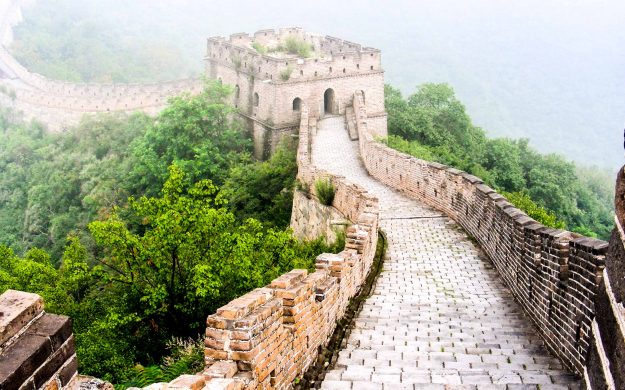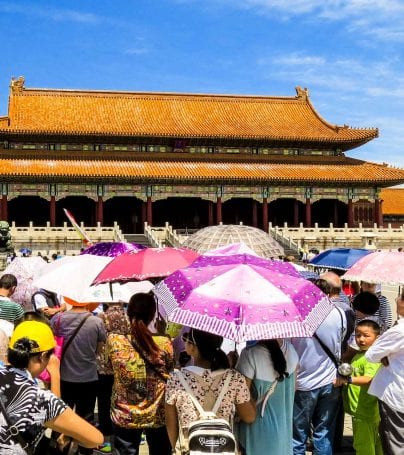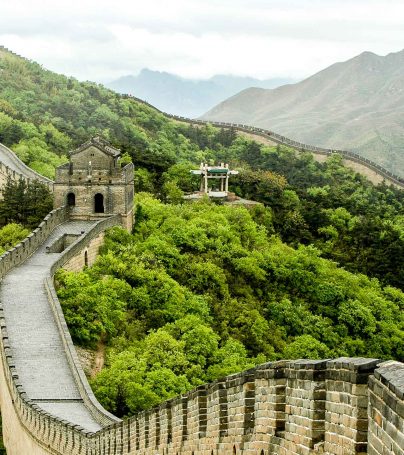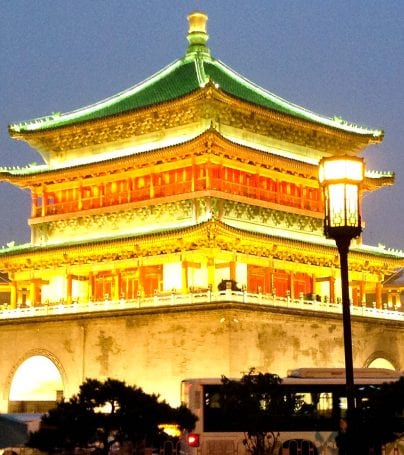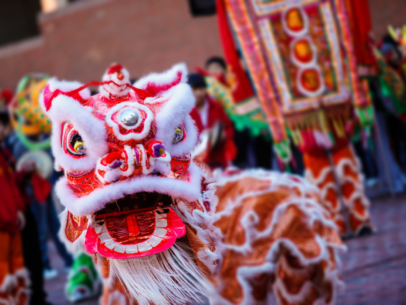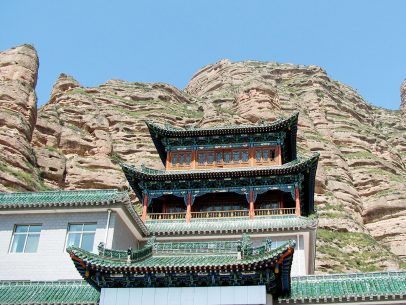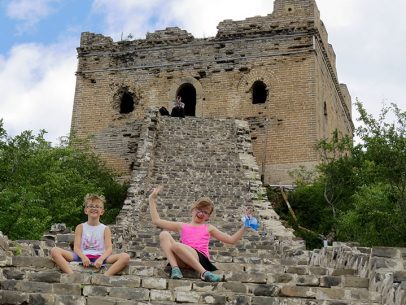Beijing Adventure Tours
Beijing, also known as Peking, is a metropolis in northern China and the capital of the People’s Republic of China. Governed as a municipality under direct administration of the central government, Beijing borders Hebei Province to the north, west, south, and for a small section in the east, and Tianjin Municipality to the southeast. Beijing is one of the Four Great Ancient Capitals of China. Beijing is divided into 16 urban and suburban districts and two rural counties. Beijing is a major transportation hub, with dozens of railways, roads, and motorways passing through the city. It is also the destination of many international flights arriving in China. Beijing is recognized as the political, educational, and cultural center of the People’s Republic of China, while Shanghai and Hong Kong predominate in economic fields. The city hosted the 2008 Olympic Games. Few cities in the world besides Beijing have served as the political and cultural center of an area as immense as China for so long. The Encyclopædia Britannica describes it as “one of the world’s great cities,” and declares that the city has been an integral part of China’s history for centuries; there is scarcely a major building of any age in Beijing that doesn’t have at least some national historical significance. Beijing is renowned for its opulent palaces, temples, and huge stone walls and gates. Its art treasures and universities have long made the city a center of culture and art in China.
History
Zhoukoudian
The earliest remnants of human habitation in the Beijing municipality are found in the caves of Dragon Bone Hill near the village of Zhoukoudian in Fangshan District, where the Peking Man lived. Homo erectus fossils from the caves date to 230,000 to 250,000 years ago. Paleolithic homo sapiens also lived there about 27,000 years ago. There were cities in the vicinities of Beijing by the 1st millennium BC, and the capital of the State of Yan, one of the powers of the Warring States Period (473-221 BC), Ji (薊/蓟), was established in present-day Beijing.
After the fall of the Yan, the subsequent Qin, Han, and Jin dynasties set up local prefectures in the area. During the fall of the Han, it was the seat of the warlord Gongsun Zan. In Tang Dynasty it became the headquarters for Fanyang jiedushi, the virtual military governor of current northern Hebei area. The An Shi Rebellion was also launched from here in AD 755.
Medieval Period
The Pagoda of Tianning Temple, at 13 stories and 57.8 m (189 ft) in height, built by 1120 during the Liao Dynasty
In 936, the Later Jin Dynasty (936-947) of northern China ceded a large part of its northern frontier, including modern Beijing, to the Khitan Liao Dynasty. In 938, the Liao Dynasty set up a secondary capital in what is now Beijing, and called it Nanjing (the “Southern Capital”). In 1125, the Jurchen Jin Dynasty conquered Liao, and in 1153 moved its capital to Liao’s Nanjing, calling it Zhongdu (中都), the “central capital.” Zhongdu was situated in what is now the area centered around Tianningsi, slightly to the southwest of central Beijing. Some of the oldest existing relics in Beijing, such as the Tianning Temple, date to the Liao.
Mongol forces burned Zhongdu to the ground in 1215 in what is now known as the Battle of Beijing. Later in 1264, in preparation for the conquest of all of China to establish the Yuan Dynasty, Kublai Khan decided to rebuild it slightly north to the center of the Jin capital, and in 1272, he made this city his capital as Dadu (大都, Chinese for “great capital”), or Daidu to the Mongols, otherwise spelled as Cambaluc or Cambuluc in Marco Polo’s accounts. Construction of Dadu finished in 1293. The decision of Kublai Khan greatly enhanced the status of a city that had been situated on the northern fringe of China proper. The center of Dadu was situated slightly north of modern central Beijing. It centered on what is now the northern stretch of the 2nd Ring Road, and stretched northwards to between the 3rd and 4th Ring Roads. There are remnants of the Yuan-era wall still standing, and they are known as the Tucheng (土城 literally, the ‘earth wall’).
Ming and Qing Period
An Italian map applying both the names of “Peking” (Beijing) and “Xuntieu” (Shuntian) to the city, published in 1682.
In 1368, Zhu Yuanzhang, soon after declaring himself the first emperor of the Ming Dynasty, sent an army toward Dadu, still held by the Yuan. The last Yuan emperor fled north to Shangdu, and Zhu razed the Yuan palaces in Dadu to the ground. The city was renamed Beiping (北平) in the same year, and Shuntian (順天) prefecture was established in the area around the city. In 1403, the new (and third) Ming emperor – the Yongle Emperor – renamed this city ‘Beijing’, and designated Beijing the co-capital alongside the (then) current capital of Nanjing. Beijing was the subject of a major construction project for a new Imperial residence, the Forbidden City that lasted nearly 15 years (1406 to 1420). When the palace was finished, the Yongle Emperor ceremoniously took up residence. From 1421 onwards, Beijing, also known as Jingshi (京师), was the “official” capital of the Ming Dynasty while Nanjing was demoted to the status of “secondary” capital. This system of dual capitals (with Beijing being vastly more important) continued for the duration of the Ming Dynasty. Thirteen of the sixteen Ming Emperors are buried in elaborate tombs near Beijing.
A corner tower of the Forbidden City
By the 15th century, Beijing had essentially taken its current shape, and the Ming-era city wall served as the Beijing city wall until modern times, when it was pulled down and the 2nd Ring Road was built in its place. It is believed that Beijing was the largest city in the world from 1425 to 1650 and from 1710 to 1825. Other notable buildings constructed during the Ming period include the Temple of Heaven (built by 1420). Tiananmen, now a state symbol of the People’s Republic of China and featured on its emblem, was first built in 1420, and rebuilt several times later. Tiananmen Square was built in 1651 and enlarged in 1958. Jesuits finished building the first Beijing-area Roman Catholic church in 1652 at the Xuanwu Gate, where Italian Jesuit Matteo Ricci (1552–1610) had lived; the modern Nantang (南堂, Southern Cathedral) has been built over the original cathedral.
The end of the Ming came in 1644 when, for 40 days, Li Zicheng’s peasant army captured Beijing and overthrew the Ming government. When the powerful Manchu army arrived at the outskirts of the city, Li and his followers abandoned the city and as a result the Manchu forces, under Prince Dorgon, captured Beijing without a fight.
Prince Dorgon established the Qing Dynasty as a direct successor to the Ming, and Beijing remained China’s capital. The Qing Emperors made some modifications to the Imperial residence, but in large part, the Ming buildings and the general layout remained unchanged. Beijing at this time was also known as Jingshi, which corresponded to the Manchu Gemun Hecen with the same meaning. The classic Chinese novel Dream of the Red Chamber is set in Beijing during the early years of Qing rule (the end of the 1600s).
Beijing’s Temple of Heaven as photographed in the early 20th century
During the Second Opium War, Anglo-French forces captured the city, looted and burned the Summer Palace and Old Summer Palace in 1860. Under the Convention of Peking that ended the war, Western powers secured the right to establish permanent diplomatic presence in the Beijing Legation Quarter. In 1900, Beijing was again invaded by foreign powers to quell the Boxer Rebellion. Some important Imperial structures in the city were destroyed during the fighting, including the Hanlin Academy and Summer Palace.
Republican Era
The Xinhai Revolution of 1911, aimed at replacing Qing rule with a republic, originally intended to establish its capital at Nanjing. After high-ranking Qing official Yuan Shikai forced the abdication of the Qing emperor in Beijing and ensured the success of the revolution, the revolutionaries in Nanjing accepted that Yuan should be the president of the new Republic of China and the capital remains at Beijing. Yuan gradually consolidated power and became by 1915 the new emperor of China, but died less than a year into his reign. China then fell under the control of regional warlords, and the most powerful factions fought frequent wars (the Zhili-Anhui War, the First Zhili-Fengtian War, and the Second Zhili-Fengtian War) to take control of the capital at Beijing. Following the success of the Kuomintang (KMT)’s Northern Expedition, which pacified the warlords of the north, Nanjing was officially made the capital of the Republic of China in 1928, and Beijing was renamed Beiping (Peip’ing) (北平) on 28 June that year, in English meaning “northern peace” or “north pacified”. During the Second Sino-Japanese War, Beiping fell to Japan on 29 July 1937, and was made the seat of the Provisional Government of the Republic of China, a puppet state that ruled the ethnic Chinese portions of Japanese-occupied northern China; the government was later merged into the larger Wang Jingwei Government based in Nanjing.
People’s Republic
Mao Zedong proclaiming the establishment of the People’s Republic of China in 1949
On 31 January 1949, during the Chinese Civil War, Communist forces entered Beijing without battling. On 1 October of the same year, the Communist Party of China, under the leadership of Mao Zedong, announced in Tiananmen the creation of the People’s Republic of China and renamed the city back to Beijing. Just a few days earlier, the Chinese People’s Political Consultative Conference had decided that Beijing would be the capital of the new government.
At the time of the founding of the People’s Republic, Beijing Municipality consisted of just its urban area and immediate suburbs. The urban area was divided into many small districts inside what is now the 2nd Ring Road. The Beijing city wall was torn down to make way for the construction of the 2nd Ring Road, which was finished by 1981 in accord with the 1982 city plan. That road was the first of a series of new ring roads intended for Vehicles rather than for bicycles.
Following the economic reforms of Deng Xiaoping, the urban area of Beijing has expanded greatly. Formerly within the confines of the 2nd Ring Road and the 3rd Ring Road, the urban area of Beijing is now pushing at the limits of the recently constructed 5th Ring Road and 6th Ring Road, with many areas that were formerly farmland now developed residential or commercial districts. According to a 2005 newspaper report, the size of the newly developed Beijing land was one and a half times larger than the land of old Beijing within the 2nd Ring Road. Wangfujing and Xidan have developed into flourishing shopping districts, while Zhongguancun has become a major centre of electronics in China. In recent years, the expansion of Beijing has also brought to the forefront some problems of urbanization, such as heavy traffic, poor air quality, the loss of historic neighbourhoods, and significant influx of migrants from various regions of the country, especially rural areas.
On 13 July 2001, the International Olympic Committee selected Beijing as, the host for the 2008 Summer Olympics.
Culture
People native to urban Beijing speak the Beijing dialect, which belongs to the Mandarin subdivision of spoken Chinese. Beijing dialect is the basis for Standard Mandarin, the spoken language used in mainland China, Taiwan, and one of the four official languages of Singapore. Rural areas of Beijing Municipality have their own dialects akin to those of Hebei province, which surrounds Beijing Municipality.
Beijing opera, or Peking opera (Jīngjù, 京剧), is well-known throughout the nation . Commonly lauded as one of the highest achievements of Chinese culture, Beijing opera is performed through a combination of song, spoken dialogue, and codified action sequences, such as gestures, movement, fighting and acrobatics. Much of Beijing opera is carried out in an archaic stage dialect quite different from modern Standard Mandarin and from the Beijing dialect.
Siheyuans line hutongs (胡同), or alleys, which connect the interior of Beijing’s old city. They are usually straight and run east to west so that doorways can face north and south for Feng Shui reasons. They vary in width — some are very narrow, enough for only a few pedestrians to pass through at a time.
Once ubiquitous in Beijing, siheyuans and hutongs are now rapidly disappearing, as entire city blocks of hutongs are leveled and replaced with high-rise buildings. Residents of the hutongs are entitled to live in the new buildings, in apartments of at least the same size as their former residences. Many complain, however, that the traditional sense of community and street life of the hutongs cannot be replaced. Residents, however, have limited control over their own property, as the government usually owns it. Some particularly historic or picturesque neighbourhoods of hutongs are being preserved and restored by the government, especially for the 2008 Olympics.
Beijing cuisine is the local style of cooking in Beijing. Peking Duck is perhaps the most well-known dish. The Manhan Quanxi is a rare traditional banquet originally intended for the ethnic-Manchu emperors of the Qing Dynasty; it remains very prestigious and expensive. The Fuling Jiabing is a traditional Beijing snack food, a pancake (bing) resembling a flat disk with filling, made from fu ling (Poria cocos (Schw.) Wolf, or “tuckahoe”), an ingredient common in traditional Chinese medicine. Teahouses are also common in Beijing. Chinese tea comes in many varieties and some rather expensive types of Chinese tea are said to cure an ailing body extraordinarily well.
The cloisonné (or Jingtailan, literally “Blue of Jingtai”) metalworking technique and tradition is a specialty of Beijing’s cultural art, and is one of the most revered traditional crafts in China. Cloisonné making requires elaborate and complicated processes which includes: base-hammering, copper-strip inlay, soldering, enamel-filling, enamel-firing, surface polishing and gilding. Beijing’s lacquerware is also well known for its sophisticated and intrinsic patterns and images carved into its surface, and the various decoration techniques of lacquer includes “carved lacquer” and “engraved gold”.
Younger residents of Beijing have become more attracted to the nightlife, which has flourished in recent decade, breaking prior cultural traditions that practically restricted it to the upper class.
Places of interest
…the city remains an epicenter of tradition with the treasures of nearly 2,000 years as the imperial capital still on view—in the famed Forbidden City and in the city’s lush pavilions and gardens…
At the heart of Beijing’s historical centre lies the Forbidden City, the enormous palace compound that was the home of the emperors of the Ming and Qing dynasties; the Forbidden City also hosts the Palace Museum, which contains imperial collections of Chinese art. Surrounding the Forbidden City are several former imperial gardens, parks and scenic areas, notably the Beihai, Shichahai, Zhongnanhai, Jingshan and Zhongshan. These places, like the Beihai Park are described to be masterpieces of Chinese gardening art, and are popular tourist destinations with tremendous historical importance; Zhongnanhai during the modern era has also been the political heart of various Chinese governments and regimes and is now the headquarters of the Communist Party of China. From Tiananmen Square, which is located right across the Forbidden City, there are several notable sites, such as the Tiananmen, Qianmen, the Great Hall of the People, National Museum of China, Monument to the People’s Heroes, and Mausoleum of Mao Zedong. The Summer Palace and the Old Summer Palace both lie at the western part of the urban city of Beijing; the Summer Palace, a UNESCO World Heritage Site, displays a comprehensive collection of imperial gardens and palaces that functioned as the summer retreat for the Qing Dynasty emperors.
Among the best known religious sites in the city is the Temple of Heaven (Tiantan), located in southeastern Beijing, also a UNESCO World Heritage Site, where emperors of the Ming and Qing dynasties made visits for annual ceremonies of prayer to Heaven for good harvest; located in the opposite direction of the Temple of Heaven at the northern part of the city are the Temple of Earth (Ditan), and the Temple of the Sun (Ritan) and Temple of the Moon (Yuetan), both respectively located in the eastern and western parts of the urban area. Other well-known temple sites located in Beijing include the Dongyue Temple, Tanzhe Temple, Miaoying Temple, White Cloud Temple, Yonghe Temple, Fayuan Temple, Wanshou Temple and the Big Bell Temple. The city also has its own Confucius Temple, and a Guozijian. The Cathedral of the Immaculate Conception was built in 1605, and is the oldest Catholic church in Beijing. The Niujie Mosque is also the oldest mosque in Beijing, with a history over a thousand years old.
Beijing contains several well-preserved pagodas and stone pagodas, such as the towering Pagoda of Tianning Temple, which was built during the Liao Dynasty from 1100–1120, and the Pagoda of Cishou Temple, which was built in 1576 during the Ming Dynasty. Several historically important stone bridges are also located in Beijing, including the 12th century Lugou Bridge, the 17th century Baliqiao bridge and the 18th century Jade Belt Bridge. The Beijing Ancient Observatory displays pretelescopic spheres dating back to the Ming and Qing dynasties. The Fragrant Hills (Xiangshan) is a popular scenic public park that consists of natural landscape areas as well as traditional and cultural relics. The Beijing Botanical Garden exhibits over 6,000 species of plants, including a variety of trees, bushes and flowers, and an extensive peony garden. The Taoranting Park, Chaoyang Park, Haidian Park and Zizhu Yuan are all popular recreational parks that consist of a variety of natural landscapes. The Beijing Zoo is a center of zoological research that also contains rare animals from various continents, including the giant panda of China.
Beijing is also known for its siheyuan (courtyard houses) and hutong (alleys), although they are increasingly disappearing due to the growth of city constructions and are giving way to high-rises. The city has several well-preserved neighborhoods of siheyuan, including some of the more grand courtyard houses, such as the Prince Gong Mansion. There are over hundreds of museums in Beijing, and aside from the Palace Museum in the Forbidden City and the National Museum of China, other major museums include the National Art Museum of China, the Capital Museum, the Beijing Art Museum, the Military Museum of the Chinese People’s Revolution, the Geological Museum of China, the Beijing Museum of Natural History and the Paleozoological Museum of China.
Located at the outskirts of urban Beijing but within its municipality are the Thirteen Tombs of the Ming Dynasty, the lavish and elaborate burial sites of thirteen Ming emperors, which have been designated as part of the UNESCO World Heritage Site “Imperial Tombs of the Ming and Qing Dynasties”. The archaeological Peking Man site at Zhoukoudian is another World Heritage Site within the Beijing municipality, and it contains a wealth of discoveries, including one of the first specimens of Homo erectus, and an assemblage of bones of the gigantic hyena Pachycrocuta brevirostris. There are several sections of the UNESCO World Heritage Site Great Wall of China located in the municipality, most notably Badaling, Jinshanling, Simatai and Mutianyu.
Information based on http://en.wikipedia.org/wiki/Beijing
Customize Your Dream Adventure
We are here to help craft tailor-made adventures for individuals, couples, families, and groups of explorers.

